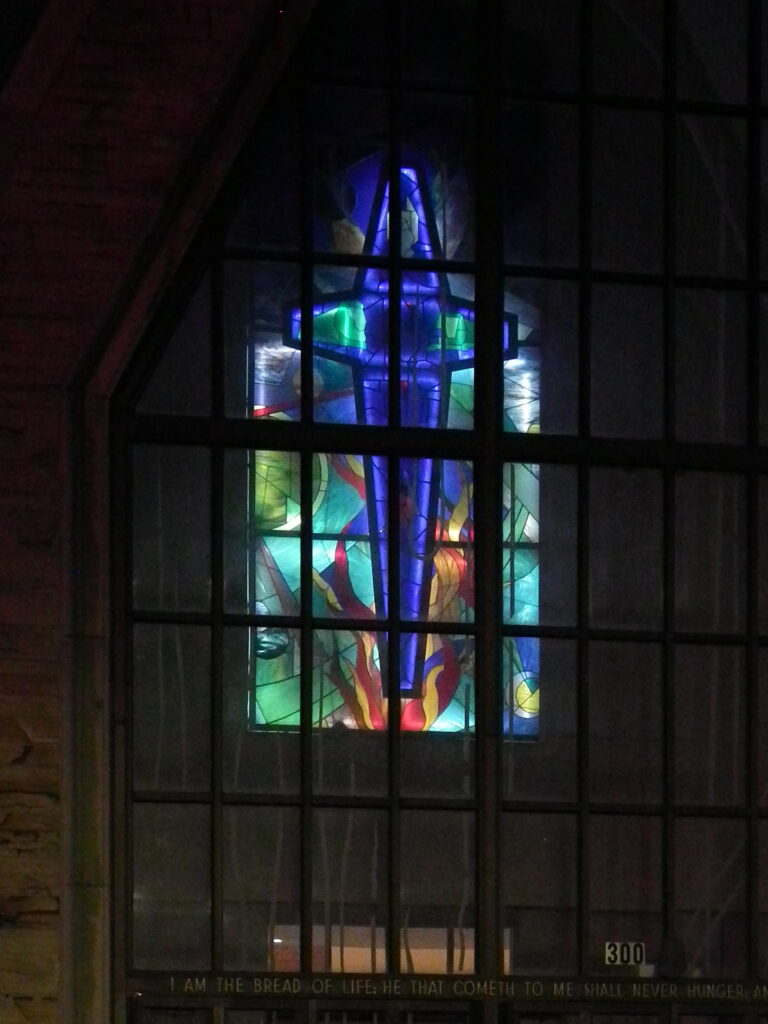
Reconstructed on its original site, where it was built after state law required the Moravians to separate their African brethren.




After the library moved to larger quarters, this became Our Lady of Fatima Chapel, and so it remains today. But it still has that Carnegie Library look that was defined by Longfellow, Alden & Harlow. This one was designed by North Carolina’s own Edward L. Tilton.


First Presbyterian is an empire with multiple buildings on a large campus downtown. The main sanctuary, above, was built in 1971. It has a commanding position and makes the most of it; old Pa Pitt had to stand in the middle of Third Street to get this picture of it. Although the church is in a striking modernist style, it harmonizes so well with the older Gothic Sunday school and fellowship hall behind it that it is hard to tell where the older leaves off and the newer begins.




At night a lighted cross hovers in the front window.
The main church and the buildings behind it are collectively described as Building A. Building B, in an uncompromisingly rectangular modernist style, was getting some renovation and probably expansion when Father Pitt visited.

Blum seemed to handle all the construction in downtown Winston, of which there was quite a lot when Father Pitt was walking around.


Building C, a postmodernist construction that tries to emulate the materials of Building A, includes the Worship Center, where the “modern” services are held on Sunday mornings.



Built in 1861 for the Moravians of African ancestry (who were required by state law to worship separately, which was not a Moravian practice otherwise), this church is historic for any number of reasons. Wikipedia says that it is, surprisingly, the oldest Black church still standing in North Carolina. It was the place where General Orders 32, announcing the freedom of the former slaves, was read to the congregation in 1865.

The front section was added, with tasteful matching of style and materials, in 1890.


The Moravian arch is a distinctive feature of Moravian building of which Winston-Salem is very proud.
